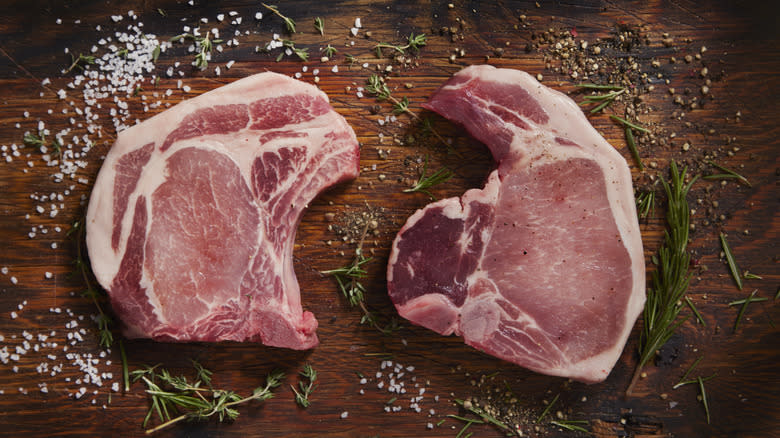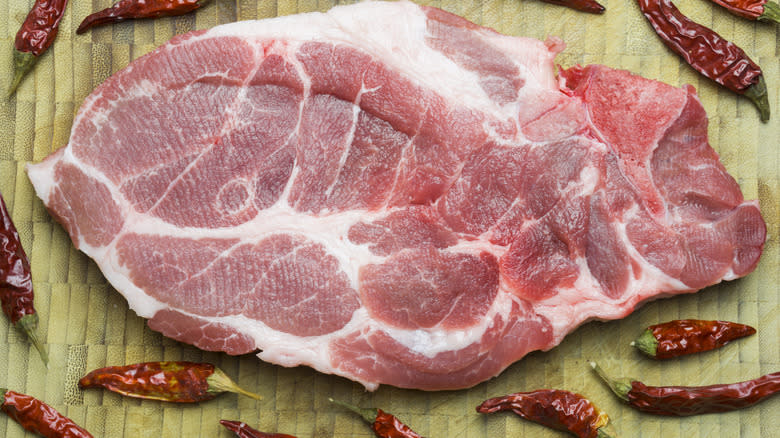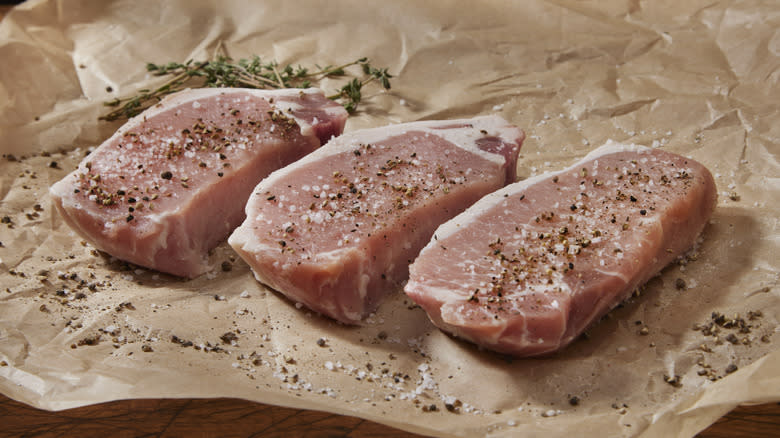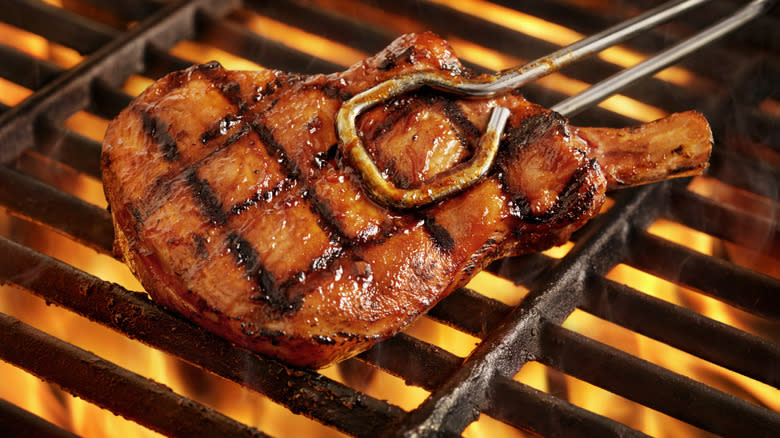The Biggest Differences Between Berkshire And Regular Pork Chops

Few cuts of pork are more universally beloved than the chop. Akin to what steak is to beef, these cuts are typically butchered into thick, eye-catching slabs, with a leaner fat content that makes them easy to cook with. From grilling to smoking, pan-frying to braising, these cuts are fit for many preparation methods, meaning there are many pork chop recipes to incorporate into your dinner rotation.
If you're looking to elevate the pork chop from an everyday familiar meal, turn to Berkshire pork chops. Sourced from a distinct breed of pig, this meat stands out in flavor and texture, with incredible marbling, and a naturally sweet taste. It's still butchered in the same style as a regular pork chop, but they look distinct with little specks of fat and a redder tint. With careful preparation, Berkshire pork chops outshine a standard pork chop on the plate, showcasing a delectable intrinsic flavor.
Read more: 13 Underrated Cuts Of Meat You Should Be Grilling
What Are Berkshire Pork Chops?

Berkshire pork chops refer to a cut sourced from a specific breed, the Berkshire hog. The breed is centuries old, with roots in 17th-century England. It was the first pork breed to be isolated, noted for its special culinary qualities. The pig variety was then carried to the U.S. in the 1820s, and also imported to Japan where the cut is called "kurobuta," a reference to the hog's black coloration. Today, many of the pigs are raised without antibiotics and in pastures, further increasing their quality.
Berkshire pork has a higher fat content than traditional pork, with excellent marbling. This intramuscular fat is found throughout the animal, so it translates to tastier pork chops, too. The meat is more tender, and has better moisture retention. Berkshire pork has a distinct flavor, with a more pronounced natural sweetness, accompanied by slight earthy and nutty notes. Such qualities make for an extra tasty type of pork chop.
What Are Regular Pork Chops?

Most of us are familiar with regular pork chops; they're the animal's most popular cut. All pork chop varieties are derived from the loin, which runs through the animal's back from hip to shoulder. This same region also provides the meat for a beautiful roasted tenderloin. However, instead of an elongated shape, pork chops are cut wide and thick in a manner similar to steak.
Since their source covers such a large area, there is more than one type of pork chop. They are named according to which position they occupy on the animal: Shoulder, rib, loin, boneless, and sirloin. Each one comes with different fat content and flavor, so they're predisposed to distinct cooking methods.
Additionally, you'll need to decide if you should get bone-in or boneless pork chops. The inclusion of the bone lends to a more moist pork chop, but it also requires additional time to cook through evenly, slightly complicating the process. Regardless of what pork chop type you buy, it's easy to see the appeal of this delicious cut.
Premium Berkshire Pork Chops Benefit From Careful Preparation

Both Berkshire and regular pork chops can be sourced from the same sections of hog; there's no butchering distinction between the two types. Berkshire pork chops do naturally pack in more fat and flavor, which combined with the way they are raised, make them a more expensive choice. While you could cook the variety interchangeably with the regular kind, it's worthwhile to highlight the natural flavor when using the more premium Berkshire pork chops.
No need to make creamy smothered pork chops -- save such recipes for the more affordable regular pork chops. Instead, choose preparing either slow-cooking methods like smoking and braising, or high heat applications like grilling and sauteing. You'll want to make the most of the Berkshire's coveted fat, which starts to render at lower temperatures.
It's all about optimizing heat -- so consider sous vide pork chops for Berkshire cuts. The water bath will be nailed to the degree, and then the chop will be colored with a high heat saute. Also consider smoking, especially if you're dealing with a large Berkshire pork chop. The delicate finesse of wood, temperature, and smoke will meld with the meat's natural fatty flavor, producing a stunning exemplar. A Berkshire purchase is worthy of such laborious cooking methods; it's what will highlight the chop's special essence.
Read the original article on Tasting Table

